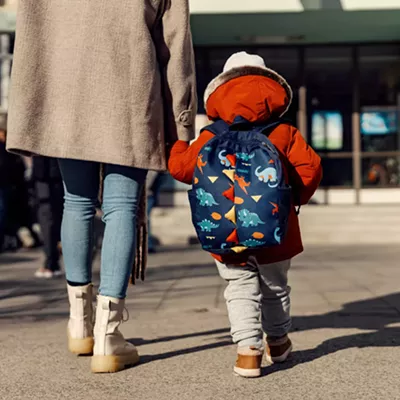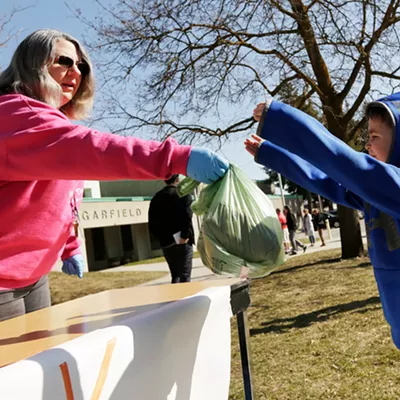
We are failing a generation of Black and Latino students. In Washington state's traditional public schools, only about one-third of Black and Latino students are "on track" in English and only about 22% in math. Those statistics should unnerve everyone who cares about racial and social justice, and the root causes of inequity.
Fortunately, there are public schools where Black and Latino students are learning at higher levels. In Washington state's charter public schools, Black/African American and Latino students achieve 15-17 percentage points higher in English proficiency than their district peers. In math, Black and Latino charter public school students score 19-22 points higher than their peers at traditional public schools.
At charter public school Spokane International Academy (SIA), 43% of Black/African American students and 62% of Hispanic/Latino students achieve English proficiency, whereas only about a third do statewide. In math, 57% of SIA's Black/African American students and 54% of its Hispanic/Latino students achieve proficiency; statewide in traditional public schools the percentage for those populations is about 22%.
In charter public schools across our state, both staff and students attribute improved performance to personalized student-teacher relationships. That individual attention fosters a learning environment where students feel heard and safe. Improved performance could also be because achievement is a core value at many of our state's public charters.
Student-teacher demographics could also be a factor. In Washington's charter public schools, 65% of students are Black, Indigenous or people of color, while over a third of teachers are, compared with 10% of the teachers in traditional public schools.
Flexibility could be another factor. In Washington's charter public schools, in exchange for a higher level of accountability, teachers may customize curriculum and the amount of time spent on a subject to meet the learning needs of the students in their class — and they can adjust that throughout the year as students' learning needs change. Charter public school principals can adjust their school's budget throughout the year to accommodate evolving student needs or to seize an unexpected field trip opportunity or a partnership with a local company.
Some charter public schools focus on unique student needs, such as Spokane's Lumen High, which largely serves pregnant and parenting teens, along with unaccompanied and homeless minors. There, staff members work with students to integrate social support needs with knowledge skills. At Spokane's Innovation High, academic programs can be tailored for students interested in fashion, textiles, performance music and production, building trades, and tech design.
Unfortunately, the Legislature treats these charter public schools as separate and less than equal. Charter public schools receive 25% less public money than traditional public schools. They are denied local levy funds and resources to build and maintain facilities. That means the funds they do receive, which are already less than traditional schools, must also cover construction, rent, furniture and utilities. Still, many charter students are outperforming their better-funded peers in traditional schools.
This isn't going unnoticed. Some legislators recognize a role for different types of public schools within our education system.
Spokane state Sen. Marcus Riccelli acknowledges that "one size doesn't fit all" and has "supported the way that charters are done in Spokane, under the auspices of the Spokane school board." He added, "Schools like Lumen High School that provide necessary supports for teen parents do fill a unique need and help ensure all students can pursue their academic endeavor to the fullest, regardless of the challenges they face."
Nonetheless, the Legislature capped the number of charter public schools at 17, even though the people's initiative allowed for 40.
A legislator told me there was concern that charter public schools were not taking students with special needs. But like traditional public schools, public charters must accept the students who enroll. And charter public schools on average have a slightly higher enrollment of students qualifying for special education than do traditional schools.
Some legislators are concerned that seven charter public schools have closed. The charter public school community suggests that the lower public funding level contributed to those closures. Providing equal public funding could address that.
Of course, it's unlikely every charter public school will perform better than every traditional school, just as many traditional public schools struggle to perform adequately. But if the Legislature authorized the number of charter public schools to increase to the voter approved 40, we would have a better understanding of what works. Then we could build on those lessons to create a 21st century public school system that met the needs of an increasingly diverse student body.
One state representative rhetorically asked me, "If we provide that sort of flexibility to charter schools, why wouldn't we provide that flexibility to all public schools?" Why not indeed!
I mentioned the teacher's union would oppose that, and the Democratic legislator responded, "Well, times change."
That legislator was right. Times change. Students' needs change. And how we think about public education and how we teach students needs to evolve.
There are bills before the Legislature that would increase the number of charter public schools and redress the unequal public funding. Regrettably, they are languishing in committee. Everyone concerned with social justice and equity should encourage the Legislature to pull those bills out of committee, pass them and send them to the governor for his signature. ♦
Bill Bryant, who served on the Seattle Port Commission from 2008-16, ran against Jay Inslee as the Republican nominee in the 2016 governor's race. He lives in Winthrop, Washington.























